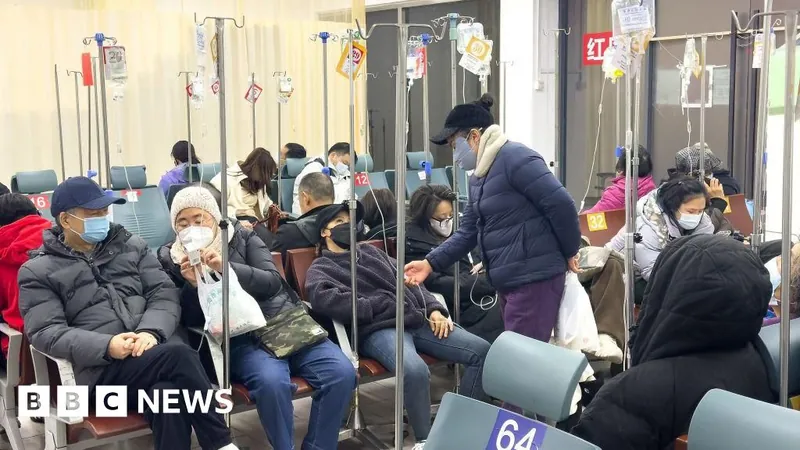
What You Need to Know About the Surge in Human Metapneumovirus Cases in China
2025-01-07
Author: Jia
What is Human Metapneumovirus (HMPV)?
Human metapneumovirus is a respiratory virus that primarily causes mild to moderate upper respiratory infections, often presenting symptoms similar to those of the flu. First identified in the Netherlands in 2001, HMPV is transmitted through direct human contact or by touching surfaces contaminated with the virus.
Symptoms generally include cough, fever, and nasal congestion. While most people experience only mild illness, very young children, particularly those under two years old, and individuals with compromised immune systems—such as the elderly or patients undergoing cancer treatment—are at greater risk for severe disease. In these vulnerable populations, HMPV can lead to serious lung complications, resulting in respiratory distress, wheezing, and symptoms resembling croup. Authorities caution that while many cases will require hospitalization, some individuals with weakened immune systems face the risk of mortality.
Why Are HMPV Cases Rising in China?
Experts note that similar to other respiratory viruses, HMPV sees heightened activity during late winter and early spring months. Cold weather tends to favor the virus’s survival and transmission, as people tend to congregate indoors, facilitating the spread. This seasonal trend has been particularly pronounced in northern China, where low temperatures are expected to persist until March.
Interestingly, HMPV cases are surging not just in China but across multiple countries in the Northern Hemisphere, including the United States and the United Kingdom. Public health data indicates that these regions have also recorded increases in HMPV cases since last October, suggesting a common seasonal pattern.
Is HMPV a Serious Threat Like Covid-19?
While the recent uptick in cases has raised eyebrows, experts reassure the public that fears of an impending pandemic are largely exaggerated. Unlike Covid-19, which arose from a novel pathogen, HMPV has been present globally for many years, leading to widespread immunity in the population due to prior infections.
Indeed, studies show that nearly every child will experience at least one HMPV infection by their fifth birthday, with many going on to have multiple reinfections throughout their lives. This historical context reassures healthcare professionals, such as Dr. Hsu Li Yang, who emphasizes that there’s no evidence to suggest HMPV poses a serious global threat at this time.
Precautions to Consider
Despite these reassurances, public health officials urge individuals, particularly those at higher risk for severe infections, to take standard precautions. Recommendations include wearing masks in crowded settings, maintaining good hand hygiene, avoiding crowded places when possible, and getting vaccinated against the flu.
In summary, while the rise in HMPV cases is noteworthy and warrants public attention, the existing immunity and historical nature of the virus suggest that widespread panic is not necessary. Instead, awareness and simple preventive measures can help manage the situation effectively. Keep informed and stay safe!

 Brasil (PT)
Brasil (PT)
 Canada (EN)
Canada (EN)
 Chile (ES)
Chile (ES)
 Česko (CS)
Česko (CS)
 대한민국 (KO)
대한민국 (KO)
 España (ES)
España (ES)
 France (FR)
France (FR)
 Hong Kong (EN)
Hong Kong (EN)
 Italia (IT)
Italia (IT)
 日本 (JA)
日本 (JA)
 Magyarország (HU)
Magyarország (HU)
 Norge (NO)
Norge (NO)
 Polska (PL)
Polska (PL)
 Schweiz (DE)
Schweiz (DE)
 Singapore (EN)
Singapore (EN)
 Sverige (SV)
Sverige (SV)
 Suomi (FI)
Suomi (FI)
 Türkiye (TR)
Türkiye (TR)
 الإمارات العربية المتحدة (AR)
الإمارات العربية المتحدة (AR)